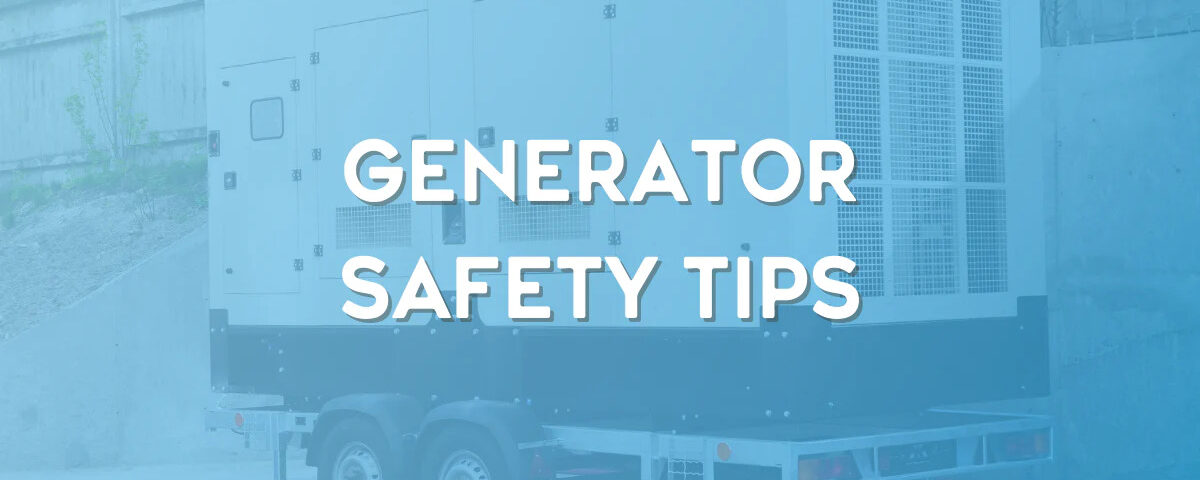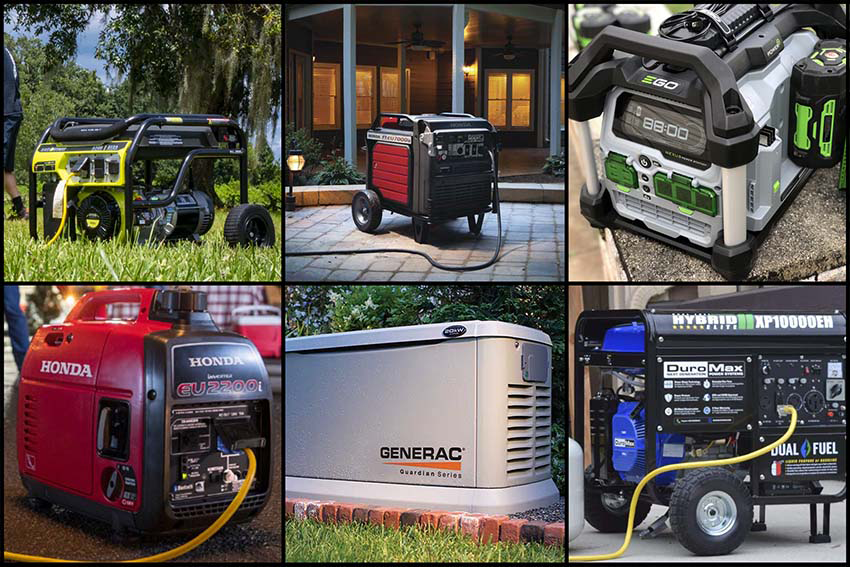
Generators are essential for providing power during outages and emergencies, but they also come with significant safety considerations. This extensive guide delves into generator safety, covering portable and standby generators. It offers best practices, reviews of safety features in leading models, and comprehensive tips for safe operation, from residential use to commercial applications.
Understanding the Risks
If not used correctly, generators can pose risks such as carbon monoxide (CO) poisoning, electrical hazards, and fire risks. Awareness and education about these dangers are the first steps in prevention, whether using a portable unit at home or a more significant standby generator for business needs.
Comprehensive Generator Safety Tips
Ventilation and Placement: Prioritize generator ventilation requirements. Generators should be placed outdoors, away from windows, doors, and vents, to prevent CO buildup, a critical aspect of portable generator safety.
CO Detectors: CO detectors are vital for generator CO poisoning prevention. They should be installed in your home, especially near bedrooms and living areas, to alert you of dangerous CO levels.
Electrical Safety: Follow safe generator connection practices. Use a transfer switch or heavy-duty, outdoor-rated extension cords to connect the generator to your home or business. It avoids the dangerous practice of back feeding, a significant electrical hazard.
Fuel Handling and Storage: Emphasize safe generator refueling. Store fuel in inappropriate, certified containers, away from living areas, and never refuel a hot or running generator.
Maintenance and Inspection: Commit to regular generator safety inspections and preventive maintenance. It includes checking oil and fuel levels, replacing filters, and ensuring the unit is in good working condition.
Safe Operation Area: Implement generator weather protection measures. Operate the generator under a canopy-like structure in wet conditions but ensure it doesn’t hinder ventilation.
Noise Management: Generator noise control is essential, especially in residential areas. Use sound barriers or position the generator at a distance to reduce noise impact.
Reviews of Safety Features in Leading Generators
When selecting a generator, look for models with advanced safety features:
CO Guard System: Some generators are equipped with systems that automatically shut down if high levels of CO are detected, a key feature for enclosed or partially enclosed spaces.
Overload Protection: A crucial feature that prevents power surges from damaging the generator and connected appliances.
Efficient Cooling System: Look for generators with advanced cooling systems and flame-retardant materials to minimize the risk of overheating and fires.
Advanced Safety Features to Consider
Low-Oil Shutdown: An essential feature for preventing engine damage and reducing fire hazards.
Fuel Level Indicators: Essential for monitoring fuel usage and planning refueling.
Remote Monitoring: Some models offer remote monitoring capabilities for convenience and safety, especially for standby generators.
User Responsibility in Generator Safety
Understanding the operation and maintenance of your generator is crucial. It includes knowing how to safely start and stop the generator, connect appliances, and recognize signs of malfunction or distress.
Legal and Environmental Considerations
Comply with local regulations and environmental guidelines regarding generator use. These include noise restrictions, emissions standards, and safety compliance certifications.
Emergency Preparedness
Developing an emergency plan that includes generator operation is vital. This plan should cover how to quickly set up the generator, basic troubleshooting, and have emergency contact numbers readily available.
Long-Term Storage and Care
Proper storage of your generator is crucial for maintaining its safety and longevity. Follow manufacturer guidelines for fuel drainage, oil changes, and secure storage, especially for portable generators.
Generator Safety in Commercial Settings
Businesses using generators must comply with additional safety standards and regulations. It includes conducting regular safety training for staff, ensuring proper signage, and adhering to workplace safety and environmental regulations.
Selecting the Right Generator
Choosing a generator involves considering power output, fuel type, portability, and safety features. Selecting a model that fits your power needs and excels in safety features and compliance is essential.
Understanding Power Output and Capacity
Knowing your power requirements is critical to selecting the right generator. Overloading a generator can lead to malfunctions and safety hazards. Understand the wattage requirements of the appliances and equipment you plan to power.
Safety in Fuel Types and Options
Generators come in various fuel types, including gasoline, diesel, propane, and natural gas. Each fuel type has its safety considerations, from storage to handling and refueling. Select a fuel type that suits your safety capacity and availability.
Training and Awareness
Regular training and awareness sessions for all users are crucial, especially in settings where multiple people will operate the generator. It includes understanding the specific safety features and limitations of your generator model.
Regular Safety Audits
Conduct regular safety audits to ensure your generator is operated safely and competently. It includes checking for proper ventilation, ensuring CO detectors function, and following all safety protocols.
Conclusion
Generator safety is a comprehensive topic that requires careful attention to detail, a commitment to best practices, and an understanding of the risks associated with different types of generators. With insights from the Generator Flow Team, by following these guidelines, choosing the suitable model, and committing to regular maintenance and safety training, users can ensure a safe and reliable power source in times of need. Remember, safety in generator use is not just about following guidelines; it’s about creating a culture of safety and responsibility.





